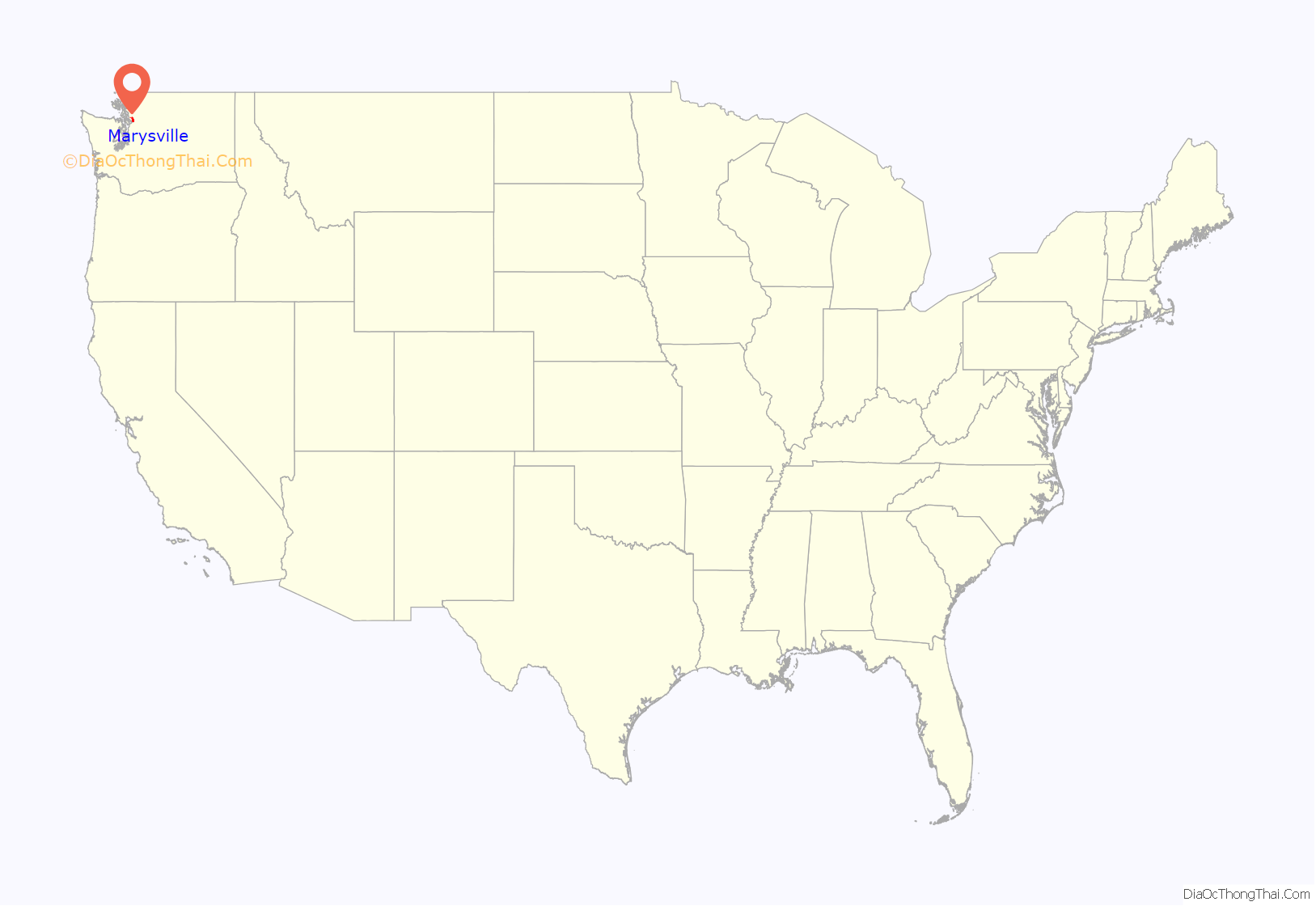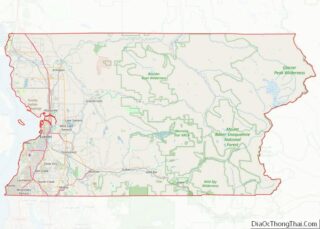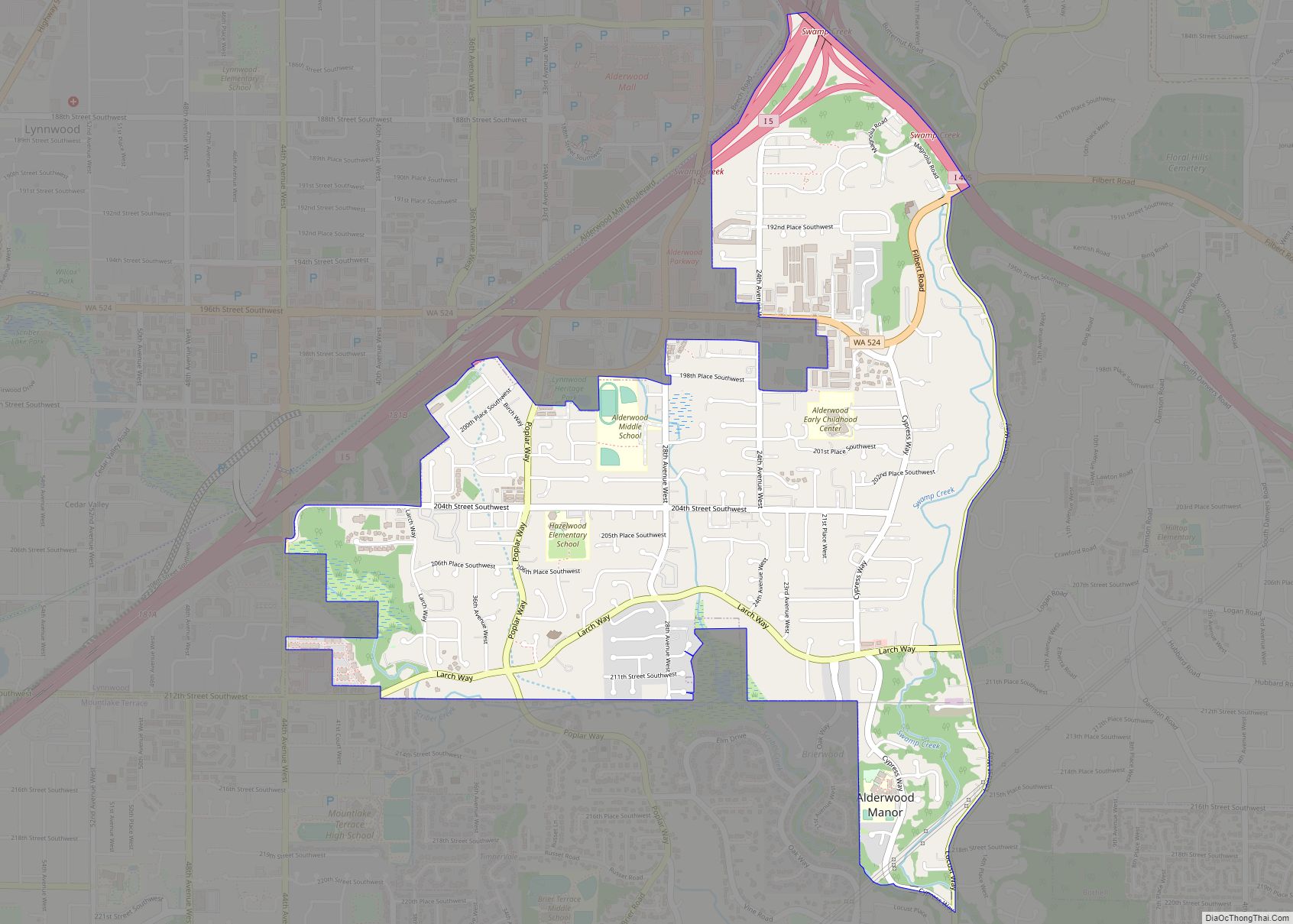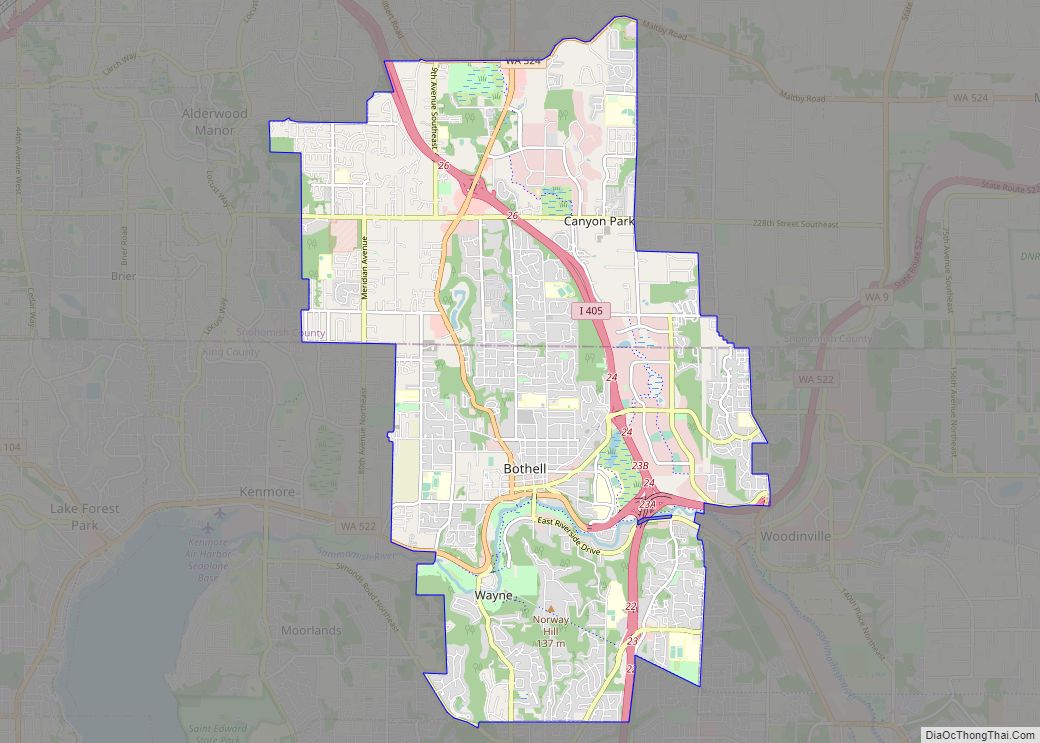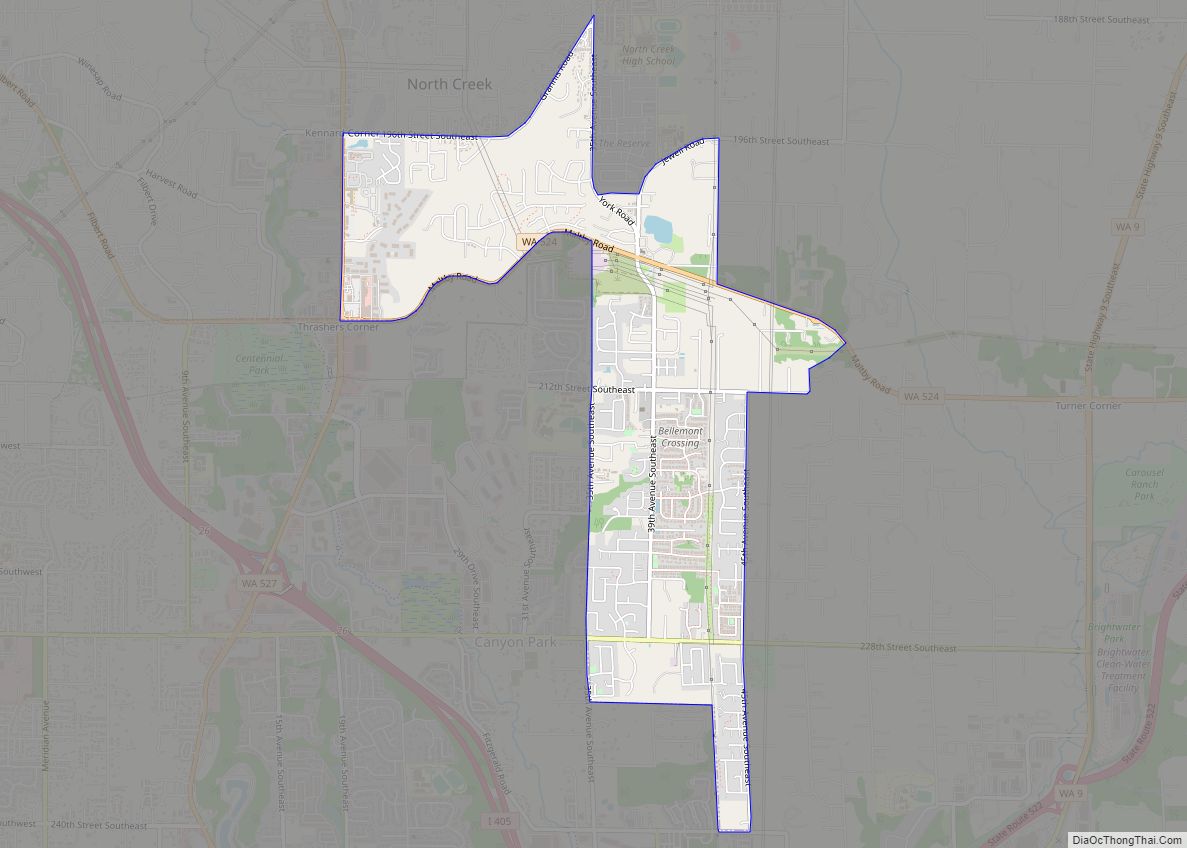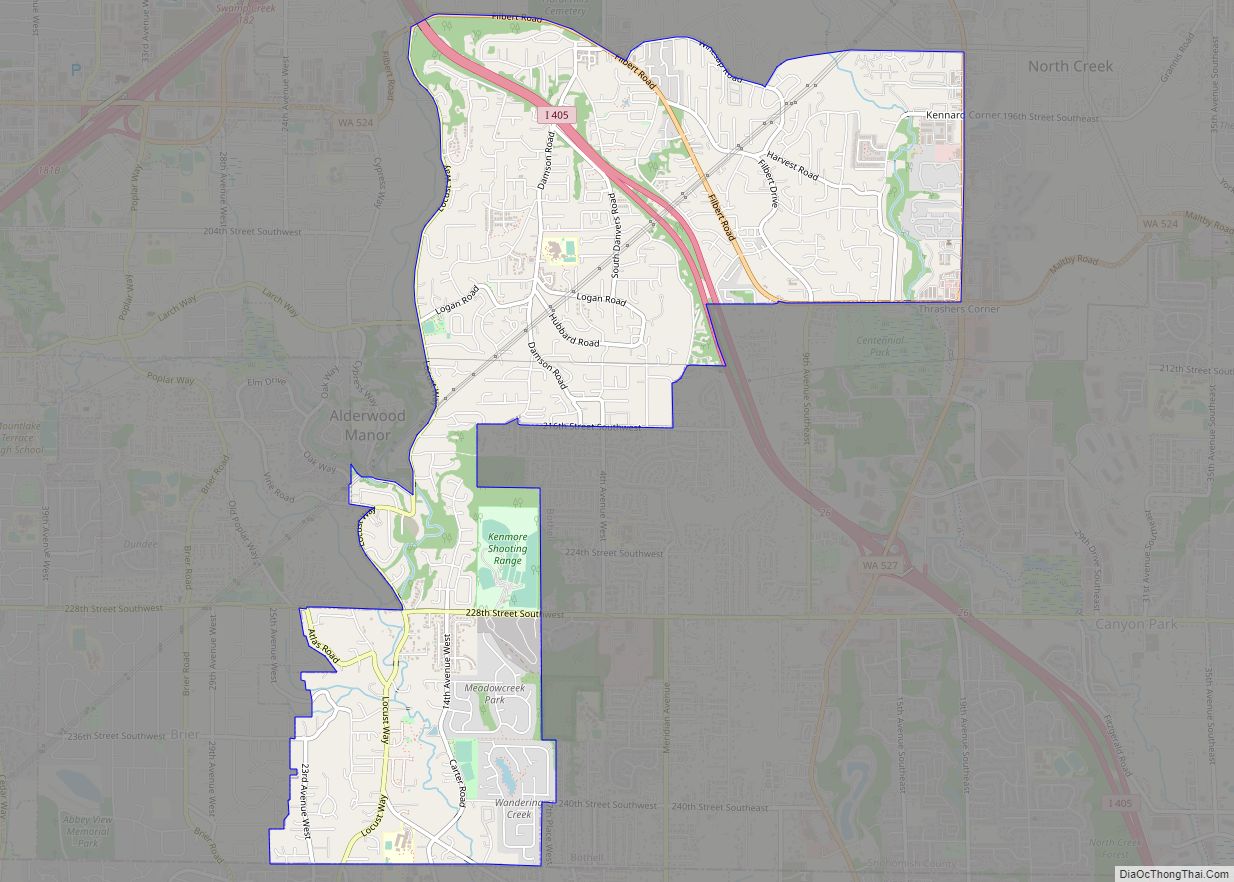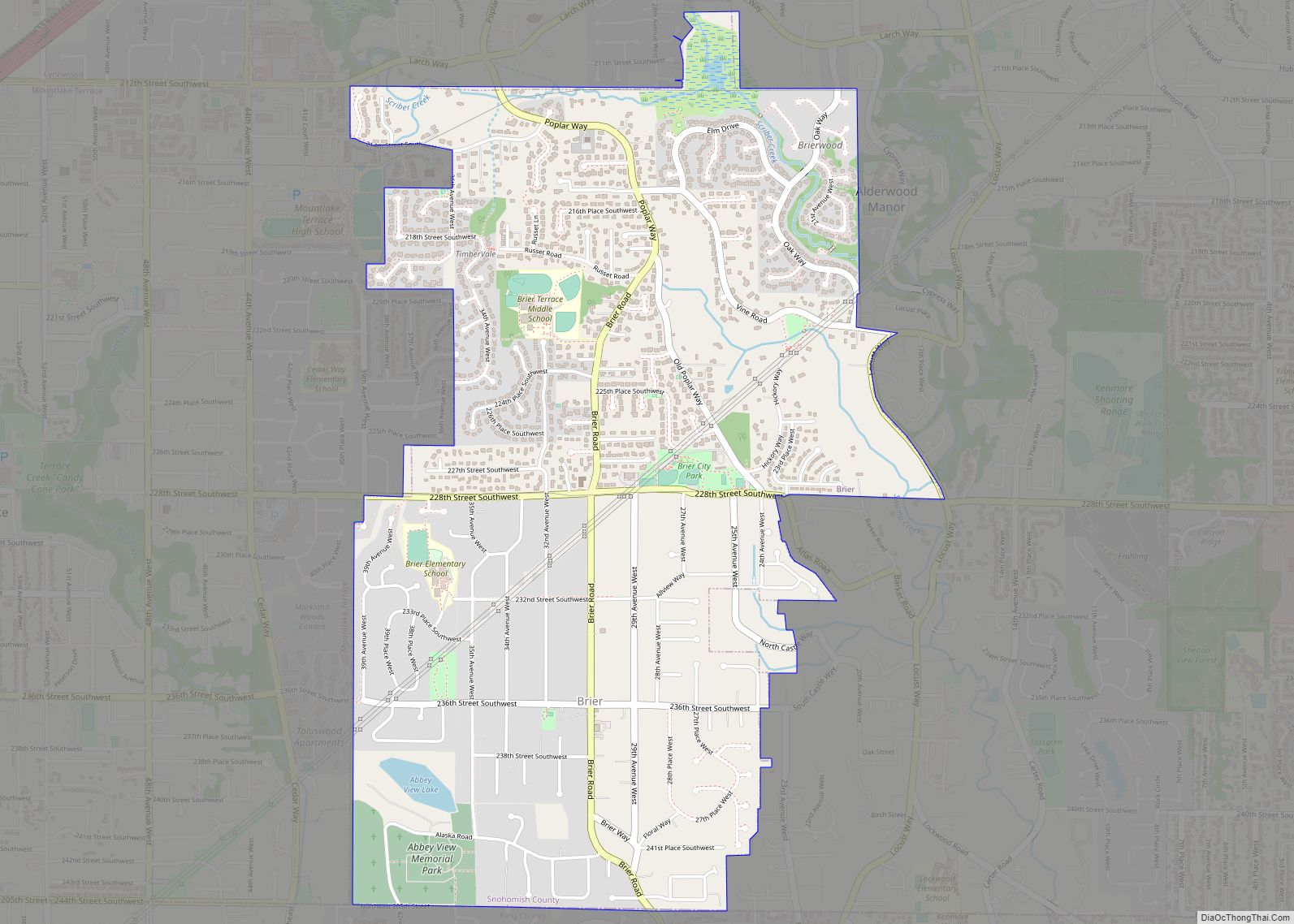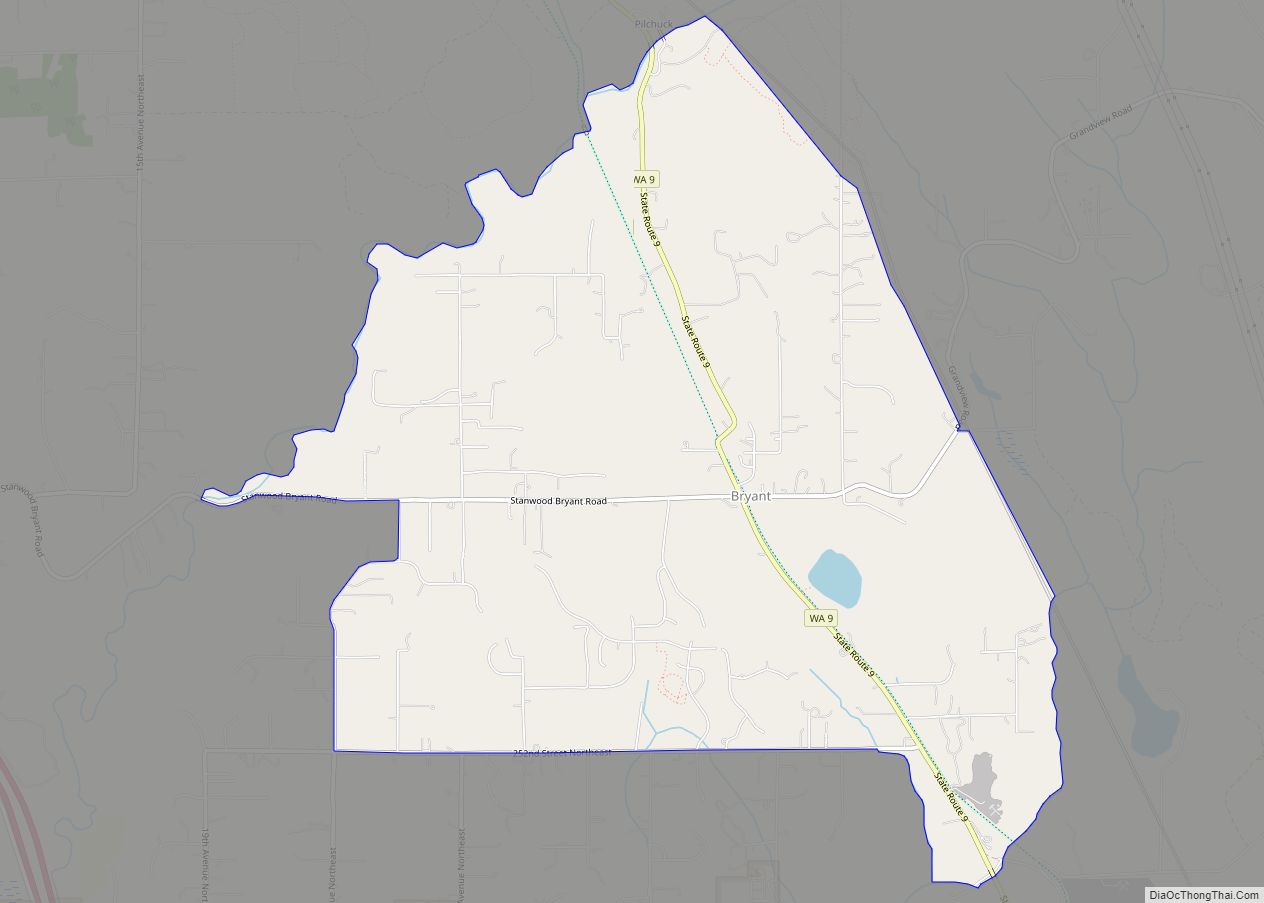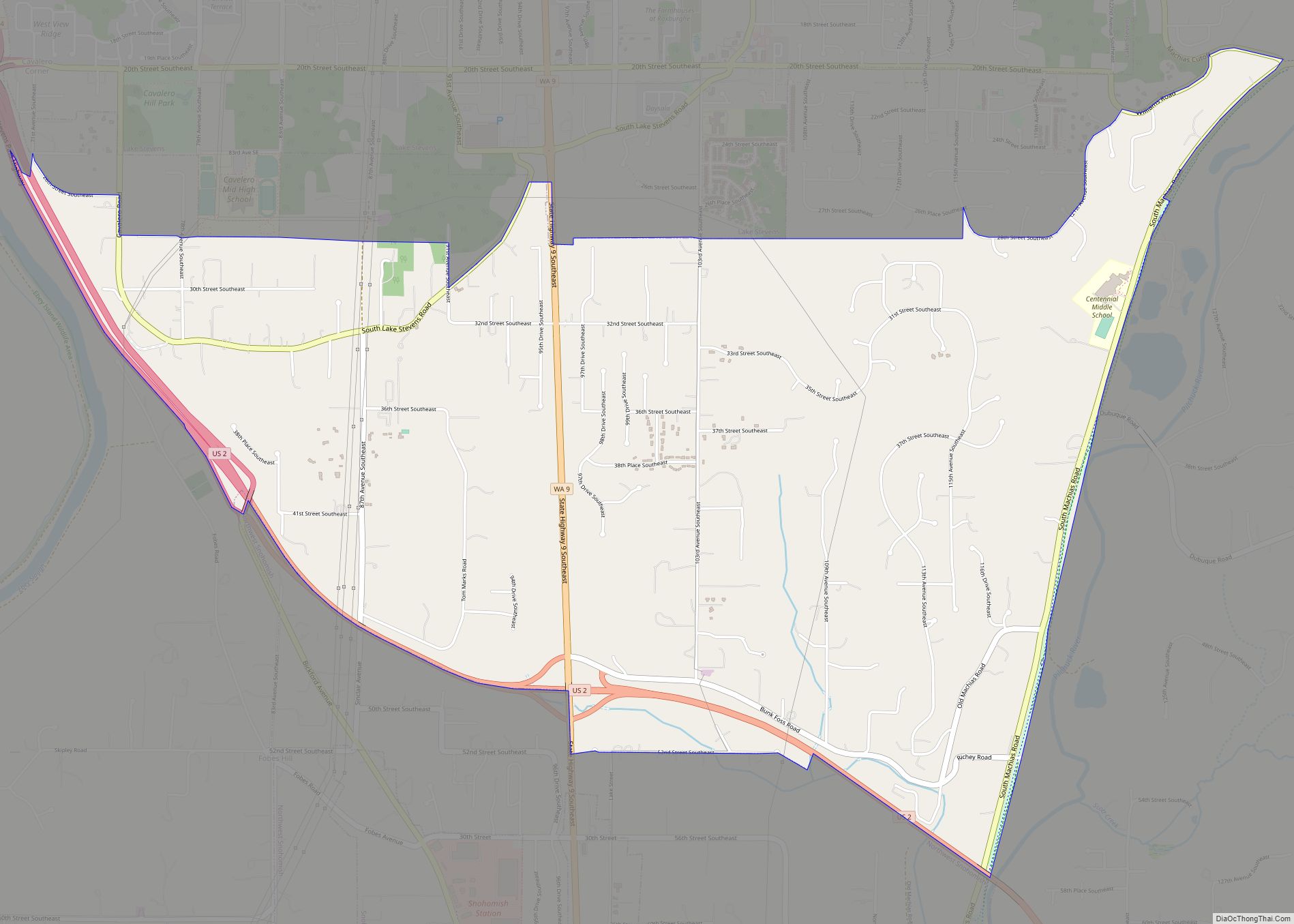Marysville is a city in Snohomish County, Washington, United States, part of the Seattle metropolitan area. The city is located 35 miles (56 km) north of Seattle, adjacent to Everett on the north side of the Snohomish River delta. It is the second-largest city in Snohomish County after Everett, with a population of 70,714 at the time of the 2020 U.S. census. As of 2015, Marysville was also the fastest-growing city in Washington state, growing at an annual rate of 2.5 percent.
Marysville was established in 1872 as a trading post by James P. Comeford, but was not populated by other settlers until 1883. After the town was platted in 1885, a period of growth brought new buildings and industries to Marysville. In 1891, Marysville was incorporated and welcomed the completed Great Northern Railway. Historically, the area has subsisted on lumber and agrarian products; the growth of strawberry fields in Marysville led to the city being nicknamed the “Strawberry City” in the 1920s.
The city experienced its first wave of suburbanization in the 1970s and 1980s, resulting in the development of new housing and commercial areas. Between 1980 and 2000, the population of Marysville increased five-fold. In the early 2000s, annexations of unincorporated areas to the north and east expanded the city to over 20 square miles (52 km) and brought the population over 60,000.
Marysville is oriented north–south along Interstate 5, bordering the Tulalip Indian Reservation to the west, and State Route 9 to the east. Mount Pilchuck, whose 5,300-foot-high (1,600 m) peak can be seen from various points in the city, appears in the city’s flag and seal.
| Name: | Marysville city |
|---|---|
| LSAD Code: | 25 |
| LSAD Description: | city (suffix) |
| State: | Washington |
| County: | Snohomish County |
| Founded: | 1872 |
| Incorporated: | March 20, 1891 |
| Elevation: | 20 ft (6 m) |
| Total Area: | 21.06 sq mi (54.54 km²) |
| Land Area: | 20.75 sq mi (53.75 km²) |
| Water Area: | 0.30 sq mi (0.79 km²) |
| Total Population: | 70,714 |
| Population Density: | 3,387.37/sq mi (1,307.85/km²) |
| ZIP code: | 98270–98271 |
| Area code: | 360 |
| FIPS code: | 5343955 |
| GNISfeature ID: | 1512435 |
| Website: | marysvillewa.gov |
Online Interactive Map
Click on ![]() to view map in "full screen" mode.
to view map in "full screen" mode.
Marysville location map. Where is Marysville city?
History
Foundation and early history
Marysville was established in 1872 by government-appointed Indian agent James P. Comeford, an Irish immigrant who had served in the Civil War, and his wife Maria as a trading post on the Tulalip Indian Reservation. The reservation, located to the west of modern-day Marysville, was established by the Point Elliot Treaty of 1855, signed by local Native American tribes and territorial governor Isaac Stevens at modern-day Mukilteo. The treaty’s signing opened most of Snohomish County to American settlement and commercial activities, including logging, fishing and trapping.
The timber industry was the largest active industry in the area during the 1860s and 1870s, with hillsides in modern-day Marysville cleared by loggers for dairy farms. The Comefords’ trading post accepted business from the reservation and logging camps that were established near the mouth of the Snohomish River. In 1874, Comeford acquired three timber claims from local loggers for $450, totaling 1,280 acres (5.2 km), and cleared the land in preparation for settlement. Comeford and his wife moved to the present site of Marysville in 1877, building a new store and wharf. Although Marysville remained a one-man town until 1883, a post office and school district were both established by 1879 using the names and signatures of Native American neighbors of Comeford’s, who were given “Boston” names for the petition. Comeford completed construction of a two-story hotel in 1883 to welcome new settlers from outside the region.
The origin of the settlement’s name, Marysville, remains disputed. According to the Marysville Historical Society, it was to be named Mariasville for Maria Comeford, but was changed to Marysville after the postal department identified a similarly-named town in Idaho. Among the first residents to arrive in the area in the 1880s were James Johnson and Thomas Lloyd, who allegedly suggested that the town be named for their previous home of Marysville, California. Comeford sold his store and wharf to settlers Mark Swinnerton and Henry B. Myers in 1884, and moved north to the Kellogg Marsh (now part of Marysville) to farm 540 acres (220 ha) of land he purchased.
Marysville was formally platted on February 25, 1885, filed by the town physician J. D. Morris and dedicated by the Comefords. More settlers began to arrive after the completion of the town’s first sawmill in 1887, joined by three others by the end of the decade. Marysville was officially incorporated as a fourth-class city on March 20, 1891, with a population of approximately 400 residents and Mark Swinnerton serving as the city’s first mayor. The Great Northern Railway also completed construction of its tracks through Marysville in 1891, building a drawbridge over Ebey Slough and serving the city’s sawmills. A newspaper named the Marysville Globe was established by Thomas P. Hopp in 1892 and continues to be published in the city.
Early 20th century
By the turn of the century, the city’s population had grown to 728, and social organizations began to establish themselves in Marysville, including a lodge of the Independent Order of Odd Fellows and a Crystal Lodge of the Free and Accepted Masons. The first city hall was opened in late 1901, at a cost of $2,000; the building also housed the city’s fire department, and later the first public library in 1907. Electrical and water supply systems were both inaugurated in 1906, alongside the construction of a high school building.
The timber industry in Marysville peaked in 1910, at which point the city’s population reached 1,239, with 10 sawmills producing lumber on the shores of Ebey Slough. Agriculture began to grow in Marysville, with its fertile land suited for the growing of strawberries in particular. By 1920, the city had more than 2,000 acres (810 ha) of strawberry fields, leading to the coining of the city’s nickname of “Strawberry City” and the establishment of the annual Strawberry Festival in 1932.
An automobile bridge across Ebey Slough and the Snohomish River estuary to Everett was completed in 1927, with funding from the state department of highways to complete the Pacific Highway (later part of U.S. Route 99, and present-day State Route 529). The city remained relatively unchanged through the Great Depression, with the diversity of industries credited for Marysville avoiding the worst of economic hardship experienced by other nearby communities. During World War II, an ammunition depot was built on the Tulalip Reservation near present-day Quil Ceda, later being re-used as a Boeing test site after the aerospace company expanded in Everett.
Late 20th century
Marysville began to grow into a bedroom community of Seattle and Everett in the late 1950s, spurred by the completion of Interstate 5 in stages from 1954 to 1969. The new freeway bypassed the town, causing a minor decline in tourist revenue at businesses that later rebounded to previous levels, also eliminating a major traffic bottleneck that paralyzed the city’s downtown. The city annexed its first area outside its original city limits in 1954, growing to over 2,500 residents. Marysville was re-classified as a third-class city in March 1962 and the local Chamber of Commerce boosted the city during the Century 21 Exposition held in nearby Seattle, hosting a UFO exposition in Smokey Point that summer.
On June 6, 1969, a freight train operated by Great Northern rammed into several disconnected train cars in front of the Marysville depot, destroying the building, killing two men in an engine on a nearby siding and injuring two others. The crash, blamed on the engineer failing to adhere to the track’s speed limit, caused $1 million in damage to railroad property and resulted in the demolition of the depot, which had served the city since 1891 and was not rebuilt.
After the initial wave of suburbanization, which built homes in former strawberry fields to the north and east of Marysville, the city’s population totaled 5,544 in 1980. The city’s growth was concentrated in outlying areas, leaving downtown to weaken economically. In 1981, the Marysville City Council declared that the downtown area was “blighted” and in need of a facelift. The council presented a $30 million urban renewal plan in November 1982 that would add new retail and office space, mixed-use development, public parks and improve pedestrian conditions in downtown, along with a large public parking lot and an expanded public marina. The plan was opposed by the marina’s owner and other downtown property owners and produced lengthy public hearings that lasted until the following year. Mayor Daryl Brennick vetoed the plan in June 1983, citing public outcry and the high cost of the proposal, and the city council failed to overturn the decision. The city instead developed a downtown shopping mall that involved the demolition of a water tower (one of two in the city) and several historic buildings in 1987. The $17 million mall opened in August 1988 with 24 stores and 180,000 square feet (17,000 m) of retail space.
Marysville underwent further population changes in the late 1980s and 1990s, continuing to build more housing and new retail centers after the lifting of a building moratorium. The city continued to annex outlying areas, growing to a size of 9.8 square miles (25 km) and population of 25,315 by 2000. The decade also saw the construction of new schools, a YMCA facility, a library, and a renovated senior center at Comeford Park. The Tulalip Tribes opened its first casino in 1992, the second Indian casino in the state, and began development of a large shopping mall at Quil Ceda Village in the early 2000s.
Marysville attempted to attract regional facilities in the late 1990s and 2000s, with varying degrees of success. The U.S. Navy opened Naval Station Everett in Everett in 1994, which was accompanied by a support annex in northern Marysville near Smokey Point the following year. The Puget Sound Regional Council explored the expansion of Arlington Municipal Airport into a regional airport in the 1990s to relieve Seattle–Tacoma International Airport, but decided instead to build a third runway at Sea-Tac because of existing traffic and local opposition. In September 2004, Marysville won a bid to build a 850-acre (340 ha) NASCAR racetrack (to be operated by the International Speedway Corporation) near Smokey Point. The project was cancelled two months later after concerns about traffic impacts, environmental conditions, and $70 million in required transportation improvements arose. The NASCAR site was later pitched as a candidate for a new University of Washington satellite campus (known as UW North Sound) in the late 2000s, competing with a site in downtown Everett. The project was put on hold in 2008 after continued disagreements over the campus’s location, before being cancelled entirely in 2011, replaced by a new Washington State University branch campus in Everett.
21st century
From 2000 to 2006, the city annexed 23 additional areas, totaling 1,416 acres (573 ha), lengthening the city to border Arlington at Smokey Point. The largest single annexation came in 2009, with Marysville absorbing 20,000 residents and 2,847 acres (1,152 ha) from North Marysville, an unincorporated area that comprised the majority of the urban growth area. New retail centers in North Lakewood and at 116th Street were built in 2007, leading to increased sales tax revenue for the city and increased traffic congestion in areas of the city.
The opening of the city’s waterfront park and public boat launch in 2005 spurred interest in redevelopment of downtown Marysville. The closure of the final waterfront sawmill in 2005, followed by its acquisition and demolition by the city in 2008, led city planners to propose a downtown master plan. The 20-year plan, released and adopted by the City Council in 2009, proposed the redevelopment of the Marysville Towne Center Mall into a mixed-use, pedestrian-oriented area with a restored street grid. The waterfront area would include trails, residential buildings, and retail spaces, along with a new city hall and civic center. The city government acquired several parcels in the waterfront in the 2010s with the intent of partnering with a private developer. In 2015, the city of Marysville was also the recipient of grants and consultation from the Environmental Protection Agency’s smart growth program, identifying strategies for infill development in downtown.
By 2010, Marysville had grown to a population of 60,020 and surpassed Lynnwood and Edmonds to become the second-largest city in Snohomish County. In 2015, the city grew at a rate of 2.5 percent, the largest rate of any city in Washington state. New housing and industrial areas are under construction and planned to fuel further population growth in Marysville. The city’s school district opened a second high school, Marysville Getchell, in 2010 to serve students living in the eastern area of Marysville. The school previously consisted of four Small Learning Communities which share the same campus and athletics programs. On October 24, 2014, the cafeteria of Marysville Pilchuck High School was the site of a school shooting, in which five students (including the perpetrator) were killed and another was left seriously injured. The shooting garnered national attention amidst a debate about gun violence and gun restrictions. The cafeteria was closed for the rest of the school year and replaced by a new building opened in January 2017, funded by $8.3 million from the state legislature and school district.
Marysville Road Map
Marysville city Satellite Map
Geography
According to the United States Census Bureau’s 2010 census, Marysville has a total area of 20.94 square miles (54.2 km)—20.68 square miles (53.6 km) of land and 0.26 square miles (0.67 km) of water. The city is located in the northwestern part of Snohomish County in Western Washington, approximately 35 miles (56 km) north of Seattle. Marysville’s city limits are generally bound to the south by Ebey Slough (part of the Snohomish River delta) and Soper Hill Road, to the west by Interstate 5 and the Tulalip Indian Reservation, to the north by the city of Arlington, and to the east by the Centennial Trail and State Route 9. The city’s urban growth boundary includes 158 acres (64 ha) outside of city limits, bringing the total area to 21.14 square miles (54.8 km).
The city’s topography varies from the low-lying downtown, located along the banks of Ebey Slough 5 feet (1.5 m) above sea level, rising to 160 feet (49 m) near Smokey Point and over 465 feet (142 m) in the eastern highlands. Marysville sits in the watershed of two major creeks, Quilceda Creek and Allen Creek, and approximately 70 minor streams that flow into Ebey Slough and Snohomish River. During the early 20th century, repeated controlled flooding and other engineering works in the Snohomish River delta contributed to the replenishment of the area’s fertile silty soil for use in farming.
The Marysville skyline is dominated by views of Mount Pilchuck and the Cascade Mountains to the east and the Olympic Mountains to the west. The 5,324-foot (1,623 m) Mount Pilchuck appears on the city’s logo and flag, and is the namesake of the Marysville Pilchuck High School.
The City of Marysville’s comprehensive plan defines 11 general neighborhoods within the city and its urban growth boundary: Downtown, Jennings Park, Sunnyside, East Sunnyside/Whiskey Ridge, Cedarcrest/Getchell Hill, North Marysville/Pinewood, Kellogg Marsh, Marshall/Kruse, Shoultes, Smokey Point, and Lakewood.
See also
Map of Washington State and its subdivision:- Adams
- Asotin
- Benton
- Chelan
- Clallam
- Clark
- Columbia
- Cowlitz
- Douglas
- Ferry
- Franklin
- Garfield
- Grant
- Grays Harbor
- Island
- Jefferson
- King
- Kitsap
- Kittitas
- Klickitat
- Lewis
- Lincoln
- Mason
- Okanogan
- Pacific
- Pend Oreille
- Pierce
- San Juan
- Skagit
- Skamania
- Snohomish
- Spokane
- Stevens
- Thurston
- Wahkiakum
- Walla Walla
- Whatcom
- Whitman
- Yakima
- Alabama
- Alaska
- Arizona
- Arkansas
- California
- Colorado
- Connecticut
- Delaware
- District of Columbia
- Florida
- Georgia
- Hawaii
- Idaho
- Illinois
- Indiana
- Iowa
- Kansas
- Kentucky
- Louisiana
- Maine
- Maryland
- Massachusetts
- Michigan
- Minnesota
- Mississippi
- Missouri
- Montana
- Nebraska
- Nevada
- New Hampshire
- New Jersey
- New Mexico
- New York
- North Carolina
- North Dakota
- Ohio
- Oklahoma
- Oregon
- Pennsylvania
- Rhode Island
- South Carolina
- South Dakota
- Tennessee
- Texas
- Utah
- Vermont
- Virginia
- Washington
- West Virginia
- Wisconsin
- Wyoming
